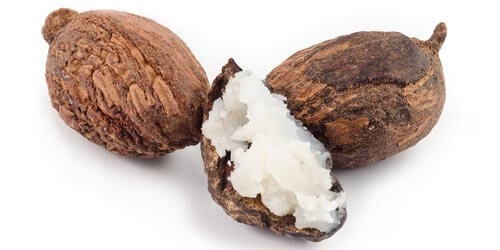Arctic Thyme is excellent for clearing up acne and it can benefit your health as well. It’s also called Creeping Thyme and is closely related to Garden Thyme (T. vulgaris). Thyme has a long history as both a medicinal and culinary herb and is also well researched.
The properties of Arctic Thyme and Thyme are similar, but the essential oil from Arctic Thyme is milder than that from Thyme. It has always been a popular tea and culinary herb in Iceland and some say it’s good for hangovers.
How I make medicine with Arctic Thyme
I love making medicine with freshly-harvested Arctic Thyme which has a wonderful smell. I use fresh Arctic Thyme flowers and leaves to make a tincture (herbs extracted in alcohol). That means I make the tincture on the same day as I pick it in the wilderness. I then blend it with other tinctures to become the Acne Healer Extract, my bestseller in Iceland.
- Botanical name: Thymus praecox
- Parts used: flowers and leaves
- Action: anti-bacterial, anti-fungal, anti-inflammatory, relieves spasms, analgesic, carminative, antitussive, expectorant, diuretic, heals wounds and emmenagogue.
- Used for: wound healing, colds, flu, sore throat, coughs, asthma, bronchitis, ear infection, gingivitis, colic, flatulence, bloating, menstrual pain, muscle pain.
- Preparations: tea, tincture, syrup, essential oil, poultice.
Arctic Thyme for Acne
Arctic Thyme has a strong anti-bacterial, anti-fungal and anti-inflammatory action. That makes it especially effective against acne, spots and blemishes. Research on Garden Thyme shows it to be more effective against acne than standard chemical remedies.
Fresh flowers and leaves are one of the ingredients in my Acne Healing Extract, which has shown to be very effective against acne on thousands of Icelanders for the last 10 years.
Arctic Thyme for Infections
This wild herb has been used for centuries to treat colds, flu’s throat infections, asthma and bronchitis. It loosens and dries up mucus in the respiratory tract as well as being good for stuffy noses and sinusitis. It’s also used for ear infections, both externally and taken internally. It’s a good rinse for gingivitis and throat infections and is also used to heal and disinfect wounds.
Arctic Thyme for Digestive Health
It’s effective against colic, flatulence and bloating and has been used to kill worms in the past. It tastes good and has been a popular herbal tea in Iceland for a long time.
Arctic Thyme for Women
This woman’s herb is good for menstrual pain and delayed menstruation. It’s also used externally for mastitis, vaginal discharge and candida. If you want to learn more about Arctic Thyme, I recommend my book: Icelandic herbs and their medicinal uses.
Old Icelandic Text from 1783
“Arctic Thyme has good power to strengthen tendons. The wine in which this herb has been steeped heals tendonitis when drunk. It also cures colds, clears and strengthens the head, thins the blood, and cures flatulence and constipation in those who have eaten too much solid food. It warms cold stomachs and also strengthens them. Compresses, moistened with this wine and laid on the head, improve fainting and dizziness, headaches and fevers. A decoction of this root is good for coughs and cures hangovers in the morning for those who have overindulged the night before. The decoction also stimulates sweating and is good for chest pains. Arctic Thyme, bruised and placed over the temples, relieves headaches and improves insomnia.”
Research on Arctic Thyme
Many in vitro tests have shown the antioxidant properties of Arctic Thyme.1-4 It also kills Bacillus subtilis, Staphylococcus aureus and other bacteria,5,6 and is a good insecticide.7 The antibacterial properties of Arctic Thyme were also shown in tests performed on the shelf-life of fresh fish. Fresh fish which was kept on ice with Arctic Thyme, instead of plain ice, showed a shelf-life 15-20 days longer than normal.8
- Komes D, Belščak-Cvitanović A et al. Phenolic composition and antioxidant properties of some traditionally used medicinal plants affected by the extraction time and hydrolysis. Phytochem Anal. 2010 Sep 16. [Previous Epub.]
- Orhan I, Senol FS et al. Acetylcholinesterase inhibitory and antioxidant properties of Cyclotrichium niveum, Thymus praecox subsp. caucasicus var. caucasicus, Echinacea purpurea and E. pallida. Food Chem Toxicol. 2009 Jun; 47(6):1304-10. Epub. 2009 Mar 12.
- Topal U, Sasaki M et al. Chemical compositions and antioxidant properties of essential oils from nine species of Turkish plants obtained by supercritical carbon dioxide extraction and steam distillation. Int J Food Sci Nutr. 2008 Nov-Dec; 59(7-8):619-34.
- Kulisić T, Krisko A et al. The effects of essential oils and aqueous tea infusions of oregano (Origanum vulgare L. spp. hirtum), thyme (Thymus vulgaris L.) and wild thyme (Thymus serpyllum L.) on the copper-induced oxidation of human low-density lipoproteins. Int J Food Sci Nutr. 2007 Mar; 58(2):87-93.
- Alzoreky NS, Nakahara K. Antibacterial activity of extracts from some edible plants commonly consumed in Asia. Int J Food Microbiol. 2003 Feb 15; 80(3):223-30.
- Rasooli I, Mirmostafa SA. Antibacterial properties of Thymus pubescens and Thymus serpyllum essential oils. 2002 Jun; 73(3):244-50.
- Isman MB, Wan AJ, Passreiter CM. Insecticidal activity of essential oils to the tobacco cutworm, Spodoptera litura. 2001 Jan; 72(1):65-8.
- Oral N, Gülmez M, Vatansever L et al. Application of antimicrobial ice for extending shelf life of fish. J Food Prot. 2008 Jan; 71(1):218-22.
Is it Safe?
I don’t recommend using Arctic Thyme when pregnant.
About the Author
Anna Rósa is a medical herbalist and author of the bestselling book Icelandic Herbs and Their Medicinal Uses. She’s the CEO and founder of Anna Rósa Skincare and a member of the National Institute of Medical Herbalists in UK. It’s the oldest herbalist institute in the world, founded in 1894.































thank you for all this useful information